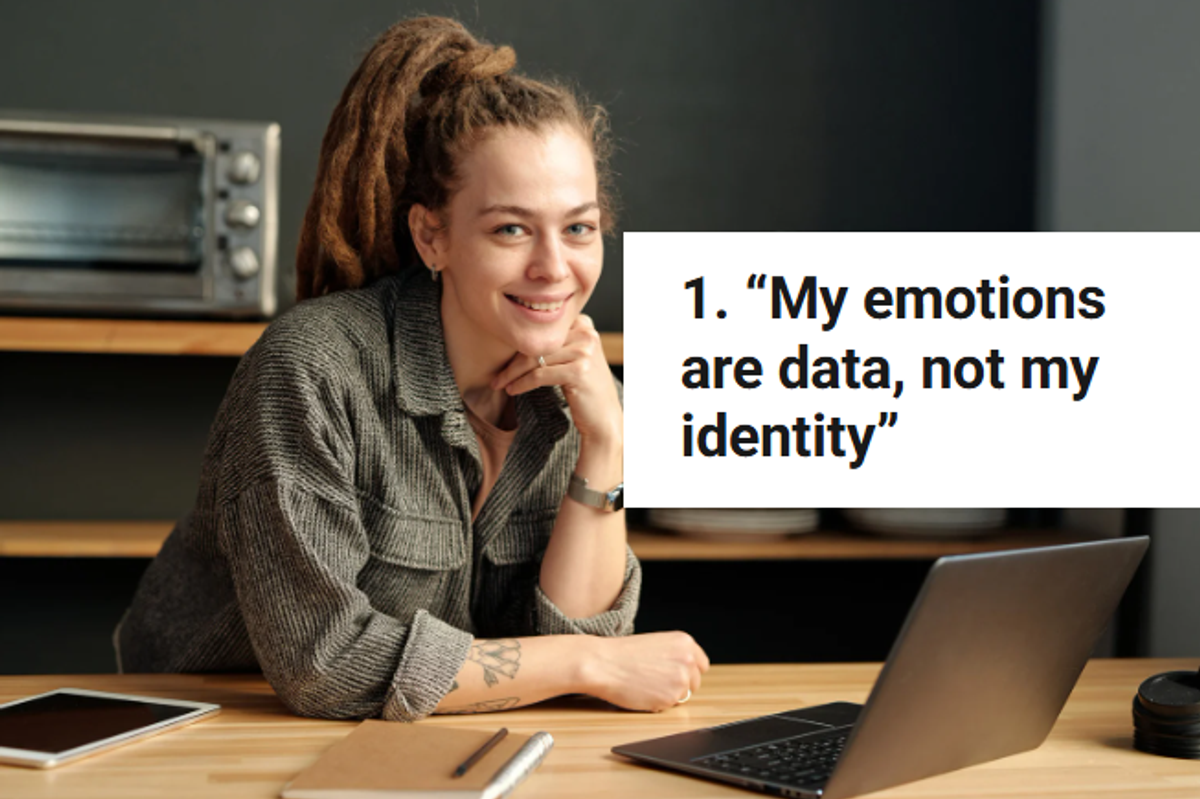Melissa Spitz's mother was institutionalized for the first time when Melissa was 6 years old.
Back then, Mrs. Spitz had just been diagnosed with bipolar disorder, and as the years went by, her mental health continued to decline. She worked her way through a hysterectomy and cancer treatment, which led to alcohol abuse, a prescription pill problem, and, eventually, a divorce from Spitz's father.
"I was actually extremely fortunate and started seeing a therapist when I was 13. It was initially to deal with my mother’s recent cancer diagnosis, but naturally a lot came up," Spitz said. "As a kid it was chaos and nothing made sense. I empathize with her a lot more, but I really feel as if I am still putting all the pieces back together."
"The last time Dad remembers Mom being 'Normal,' Bumbershoot, Seattle, 1994." All photos by Melissa Spitz/You Have Nothing to Worry About, used with permission.
After her parents' divorce, Spitz turned to photography as a coping mechanism. But it wasn't until she got to art school that she turned the lens on her own mother.
One of Spitz's undergraduate photography projects at the University of Missouri involved documenting an element of her private life for class. There was no question that she'd be heading home to immortalize her mother's fragile state.
"By turning the camera toward my mother and my relationship with her, I capture her behavior as an echo of my own emotional response," she explained in her artist statement. "The images function like an ongoing conversation."
True to her mother's bipolar diagnosis, the resulting photo series, "You Have Nothing to Worry About," depicts a life of stark binary contrasts.
Spitz shoots candids as well as posed photos. Some images upset; others encourage. Some show the good parts of her relationship with her mother, and some show the bad.
Spitz passed the class, of course. But seven years later, she still hasn't finished the project. In fact, she plans to keep documenting her mother's struggle with mental illness as long as she's alive — for her mother's sake and for her own.
"Picture at home, 2015."
"It can be exhausting, but it is extremely cathartic," Spitz said. "I really believe every image is just as much an image of me as it is of her."
"How can it not be?"
"We are both willing participants and both share the highs and lows of our relationship," she added.
"Mom doing her make-up, 2016."
Spitz eventually uploaded her photos to Instagram and found that the framed and fractured feel of the feed actually enhanced the experience of viewing the photos.
"I decided to try something new and started slicing my images and building these grids. It felt like the perfect opportunity to think about a social media platform in a different way," she explained.
The scattered chronology, varying photo sizes, and fragmented images that resulted made the photo series even more reflective of her mother's condition and their relationship.
A screengrab of Spitz's Instagram feed, showing a collage of the first portrait she took in 2009 (below) and shots from an exhibition where she displayed her photo "Quiet Please, 2016" in a similar fashion.
Instagram has also helped her vivid images to reach a wider audience — many of whom deal with similar problems.
Spitz's photographs don't just put the spotlight on her mother. They've also contributed to the larger conversation about mental health and helped to encourage people to share their own stories, often in the comments of her Instagram page.
"I have always wanted mental health to be treated the same way as physical ailments and that support for family members would be more readily available," Spitz said. "I hope my body of work and Instagram can be a small champion of this support system."
"Note from Adam to Mom, 2012," which inspired the name of the photo series.
Spitz has captured countless moments of bleak, honest beauty on camera. But she's seen her share of frights as well.
There are photos in the series of her mother's continued panic attacks, for example. Other photos show the huge regime of pills her mother relies on for stability and a B.B. gun, which her mother keeps "for protection."
"My brother and I have come to terms with the harsh reality that one day we will most likely be survivors of a suicide. It is our biggest fear," Spitz wrote in one particularly harrowing post, accompanying an image of her mother sprawled out on the carpet. She explained:
"When I used to live at home I hated unlocking the door, I constantly imagined her dead. As a kid I found my Mom laying on the kitchen floor, or bathroom floor multiple times. I remember her looking at me once and asking, 'Where’s Melissa?' She was so out if she couldn’t even recognize my face… I was 16."
Photography makes it easier for Spitz to cope and understand her mother. But it can't cure her mother's illness.
For all her struggles, her mother is moved by the power of her daughter's work — and she hopes that it can help other people, too.
"If I can help one person not feel alone, I am glad I’ve shared my story," her mother said.
When Spitz first embarked on her photographic journey, her mother was still living in the house that she had owned with her ex-husband and was still drinking heavily. But she was given a new voice just from seeing herself through her daughter's eyes. That empowerment helped lead her to quit drinking and to move into a new apartment.
Spitz's relationship with her mother is just one story of life with mental illness. But her willingness to share that hard story with the world is really important.
Not every case of bipolar disorder — or of difficult-but-loving mother-daughter relationships — looks the same. Even Spitz herself is careful to point out that her work is not intended as a blanket statement on mental health overall.
But at a time when mental illness is still constantly stigmatized, stories like these can open people's eyes and remind us that every family has their struggles and that everyone deserves compassion and support.



 TikTok · Ale
TikTok · Ale

 Phone charging.
Phone charging. bill nye chemistry GIF by NETFLIX
bill nye chemistry GIF by NETFLIX 



 The Pasterze Glacier in a 1900 postcard Image via Wikicommons
The Pasterze Glacier in a 1900 postcard Image via Wikicommons  What's left of the Pasterze Glacier
What's left of the Pasterze Glacier